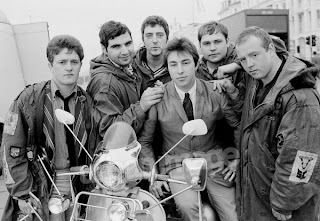After an age of masculinity and extreme styles, the natural female form was needed again. Hair went from hair damaging perms to natural, wavy hair (although it usually took a lot of styling to make it look ‘natural’) that was made popular by the cast of the TV show Friends.
The cast of Friends
Simple clothes such as tank tops or crop were worn and it became fashionable to see bra straps and naval piercings showing. Jewellery was to the minimal and simple, unlike in the ‘80s and ‘natural’ looking make up was popular. Denim was the must have staple for everyone. From the grungy ripped jeans to the Brit-pop jackets, every clique had them.
Kelly Kapowski from Saved by the Bell
Brit pop band Oasis
American power brands embraced these looks. Tommy Hilfiger was the king of street wear, especially after Snoop Dogg’s appearance wearing a Hilfiger jumper on Saturday night live (Hello Magazine, 2012). Calven Klien used shock advertisement and used sex to sell their products with the help of models Kate Moss and Mark Walberg; this was something completely new in the ‘90s and caused a bit of controversy. Sportswear giants such as Nike and Adidas became increasingly popular and worn as a status symbol by famous sports stars such as Michael Jordon who even had a brand of Nike trainers named after him.
Snoop Dogg on Saturday Night Live
Controversial Calvin Klein campaign








.jpg.jpg)





























.jpeg)